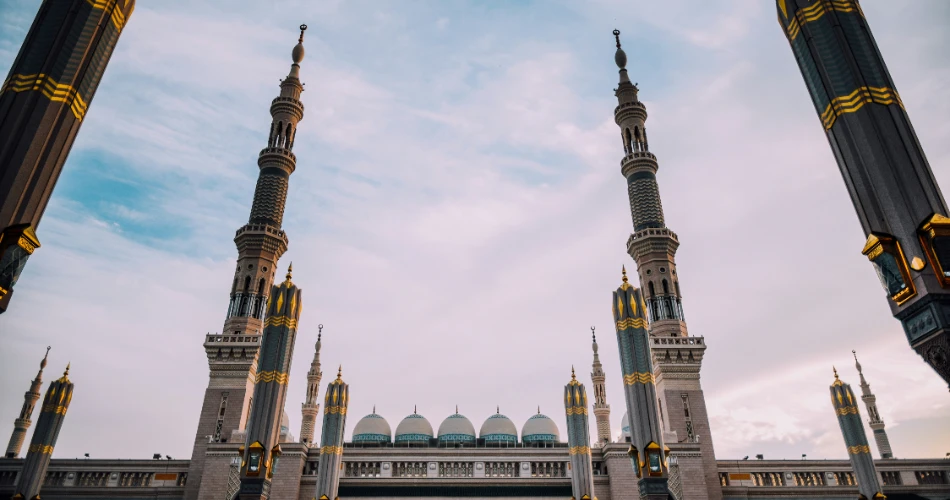Visiting Medina as a Non-Muslim – Guide

The holy city of Medina, which holds great religious significance in Islam, is located in the center of Saudi Arabia. In addition to being well-known as the Prophet Muhammad's ultimate resting place, Medina is a city rich in culture, history, and a distinct ambiance that draws tourists from all over the globe. The city not only entertains Muslims but also non-Muslim tourists who have a deep interest in the city’s rich history and dynamic culture despite its strong Islamic roots. This blog attempts to give you a thorough overview if you are visiting Medina as a non-Muslim tourist. So, let’s get in!
When Did Medina Open To Tourists?
Medina and Saudi Arabia have been making efforts to become more tourist-friendly. With the implementation of the Saudi Vision 2030 plan, which sought to diversify the nation's economy and encourage tourism, the nation saw substantial changes. Saudi Arabia started granting tourist visas as a component of this program in the latter part of 2019, enabling travelers from other nations to travel across the nation, including Medina. Please be aware, nevertheless, that changes in laws and policies about tourism may occur in the future. For the most recent information on Saudi Arabia's tourist laws, particularly those about Medina, it is essential to consult official government publications or other authorities.
How Can Non-Muslims Visit Medina?
Being a non-Muslim, visiting Medina may be a culturally enlightening experience, yet you should approach it respectfully and be mindful of the traditions of the area. The following information will assist you in making the most of your trip to Medina:
Requirements for Entry and Tourist Visas
Ensure that non-Muslim visitors to Saudi Arabia are permitted to enter Medina by consulting the country's current visa policies. Get the required visa and follow any entrance limitations imposed by the Saudi authorities.
Sensitivity to Culture
Be considerate of Islamic customs and cultural standards while you're in Medina. Consider wearing clothes with full sleeves, covering your knees and shoulders. It is best to refrain from making public shows of affection because they are not socially acceptable.
Comprehending The Prayer Times
Keep in mind that Muslims observe five daily prayer times. During these periods, some areas, particularly within mosques, may be restricted to non-Muslims.
Exploring Historical Places
Explore the rich history and notable landmarks in Medina. Among the places to visit in Medina as a non-Muslim are the Quba Mosque and the Prophet's Mosque, though it's important to be aware of any restrictions on non-Muslim access.
Learning the Culture of Islam
Seize the chance to educate yourself on Islamic history, customs, and culture—it's one of the Medina tourist things to do. Engage with locals, visit museums, and explore cultural institutions for deeper insights.
Be Mindful Of Religious Settings
The Prophet's Mosque is one of the holiest places in Islam, and non-Muslims are generally not permitted inside. Please respect any access rules posted for non-Muslim visitors.
Tours with a Guide
Consider joining guided tours specifically designed for non-Muslim tourists. These tours can provide valuable insights into the history, customs, and culture of the area while ensuring you follow local conventions.
Remain Aware
Stay informed about any changes to local policies or rules for non-Muslim tourists by consulting official sources and contacting tourism officials. While visiting Medina, always be mindful of and respect regional traditions and customs to foster positive cross-cultural interactions.
Where Can a Non-Muslim Stay in Medina?
Some accommodations offer a comfortable stay for non-Muslim visitors while respecting cultural customs. Familiarize yourself with regional dining practices, such as not eating in public during Ramadan fasting hours. Learning basic greetings and hand gestures in Arabic can enhance your experience. It’s important for non-Muslim visitors to Medina to choose lodgings that honor local traditions and provide a welcoming environment. Here are a few accommodation suggestions:
Accommodations Outside The Main Route Of The Pilgrimage
Choose lodgings on the city's periphery, away from major pilgrimage sites. This reduces the likelihood of restricted access to areas near sacred places for non-Muslims.
Hotels of Western Chains
Consider booking well-known international hotels that cater to a diverse range of guests. They often provide a more welcoming atmosphere and are attentive to the needs of non-Muslim visitors.
Commercial or Tourist Areas
Non-Muslim visitors may choose lodging in commercial areas, where a diverse range of people are expected. These areas typically offer a variety of services and facilities to cater to different guests.
Boutique Hotels Or Guesthouses
Consider booking accommodations at boutique hotels and guesthouses that cater to a diverse range of guests. These establishments often offer a more personalized experience while respecting each visitor's cultural sensitivities.
What Should One Wear In Madinah?
Although there is no strict dress code for men in Saudi Arabia, it is important to cover your shoulders and legs. While t-shirts, polo shirts, and short-sleeved shirts are acceptable, long-sleeved shirts are recommended.
Female travelers who are not Muslim are not required to wear an abaya or headscarf in Saudi Arabia, except when visiting holy sites. Although regulations may vary, it is advisable to carry a pashmina or similar covering to ensure comfort and respect for local customs.




